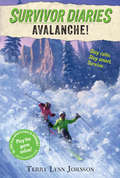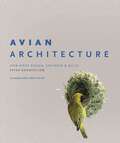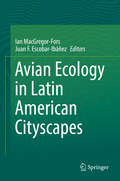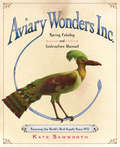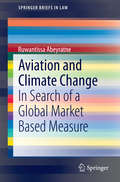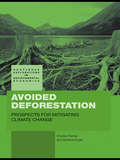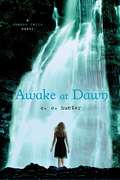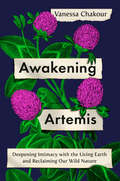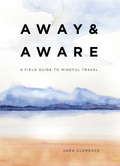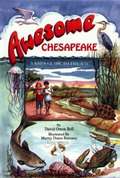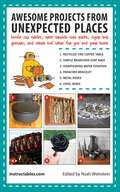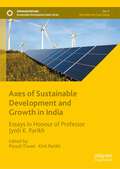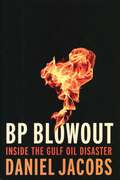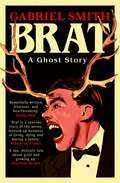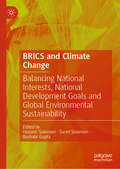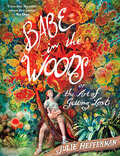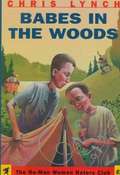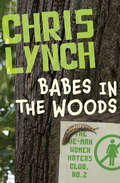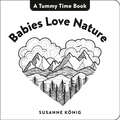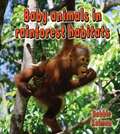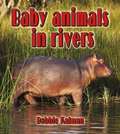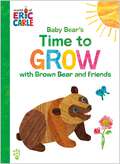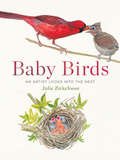- Table View
- List View
Avalanche! (Survivor Diaries)
by Terry Lynn Johnson Jani OrbanA high-stakes adventure series perfect for fans of the I Survived series and Hatchet. Twelve-year-old twins Ashley and Ryan are skiing with their parents in Wyoming's Grand Teton Mountains where there is a ground-shaking rumble. Unstable snow rushes downhill and buries them in icy white. It will take all of their knowledge and grit to survive. With seventeen years of hands-on experience and training in remote areas, survival expert Terry Lynn Johnson (Ice Dogs; Sled Dog School) creates on-the-edge-of-your-seat storytelling featuring the real skills that kids need to survive a disaster. This page-turner with illustrations includes survival tips from the National Avalanche Center and U.S. Forest Service. You could have a better chance of surviving a real-life avalanche after reading this book! Stay calm. Stay smart. Survive.
Avalanche! The Fierce White Dragon (Fountas & Pinnell Classroom, Guided Reading Grade 5)
by Laura SalasHush—The Dragon Sleeps Don't wake the white dragon. It is big. It is beautiful. And it is deadly. NIMAC-sourced textbook
Avian Architecture: How Birds Design, Engineer, and Build
by Peter GoodfellowAn illustrated guide to how birds design and build their nestsBirds are the most consistently inventive builders, and their nests set the bar for functional design in nature. Avian Architecture describes how birds design, engineer, and build their nests, deconstructing all types of nests found around the world using architectural blueprints and detailed descriptions of the construction processes and engineering techniques birds use. This spectacularly illustrated book features 300 full-color images and more than 35 case studies that profile key species worldwide. Each chapter covers a different type of nest, from tunnel nests and mound nests to floating nests, hanging nests, woven nests, and even multiple-nest avian cities. Other kinds of avian construction—such as bowers and harvest wells—are also featured.Avian Architecture includes intricate step-by-step sequences, visual spreads on nest-building materials and methods, and insightful commentary by a leading expert.Illustrates how birds around the world design, engineer, and build their nestsFeatures architectural blueprints, step-by-step sequences, visual spreads on nest-building materials and methods, and expert commentaryIncludes 300 full-color imagesCovers more than 100 bird species worldwide
Avian Ecology in Latin American Cityscapes
by Ian MacGregor-Fors Juan F. Escobar-IbáñezThis book gathers a representative sample of the relevant knowledge related to the ecology, behavior, and conservation of birds in urban Latin America. Latin America is one of the most biodiverse regions of the world, yet it is still understudied. Although it concentrates most of its population in rapidly growing cities under considerable economic, social, and environmental disparity, the study of the effects that urbanization has on biodiversity in Latin America is still insufficient. Among the best-studied wildlife groups, birds have been widely used as bioindicators in urban areas. Going from general to specific information regarding avian communities, populations, behavior, threats, and conservation issues, this book describes the state-of-the-art of avian urban ecology in the region. Such knowledge will hopefully promote the regional consolidation of the field and encourage future mechanistic studies that untangle the recorded patterns in order to have the required information to bridge the gap between evidence-based knowledge and practice in urban systems. Thus, the information included in this document will allow scientists, students, and even decision takers to relate with the current knowledge and gaps related to the topic, providing perspective for future studies and actions.
Aviary Wonders Inc. Spring Catalog and Instruction Manual: Renewing the World's Bird Supply Since 2031
by Kate SamworthSince 2031, Aviary Wonders Inc. has offered bird lovers a unique opportunity: Assemble your own bird from stunningly beautiful and carefully hand-crafted parts. The birds can even be taught to fly and to sing! This slyly satirical crafter's delight is offered as the perfect antidote to extinction of birds in the wild. Brilliantly illustrated with oil paintings and filled with laugh-aloud asides as well as sobering facts about extinct species, this mock catalog is a clever send-up of contemporary sales spin and a thought-provoking look into an all-too-possible future.
Aviation and Climate Change: In Search of a Global Market Based Measure (SpringerBriefs in Law)
by Ruwantissa AbeyratneThe book addresses the most critical issue faced by aviation and climate change: namely the development of a market based measure to control aircraft engine emissions. It discusses the current market economic trends as they impact to aviation and suggests steps and measures to be taken in the development of a workable MBM. ICAO has three years to come up with such an MBM on a global scale and this book will spur discussions on how to achieve this objective.
Avoided Deforestation: Prospects for Mitigating Climate Change (Routledge Explorations in Environmental Economics #16)
by Charles Palmer Stefanie EngelAvoided deforestation can be characterized as the use of financial incentives to reduce rates of deforestation and forest degradation, with much of the focus on forests in tropical countries. While avoided deforestation, as a policy issue, is not new, the current debate in academic and policy circles on including it in future climate change mitigation strategies such as the Clean Development Mechanism is gathering pace – and this debate is only likely to intensify as negotiations continue over what should be included in the successor agreement to the Kyoto Protocol, which is set to expire in 2012. Up until now, however, the debate in terms of the scientific and economic implications of avoided deforestation has not been brought together. This book aims to bring together important research findings in the area along with their policy implications, whilst linking avoided deforestation to political economy as well as to the latest developments in environmental and natural resource economics.
Awake at Dawn (Shadow Falls #2)
by C. C. HunterStep into the world of Shadow Falls, a camp that helps teens tap into their special. . . talents. Once you visit, you'll never forget it - and you'll never, ever be the same. From the moment Kylie Galen arrived at Shadow Falls Camp, she's had one burning question: What am I? Surrounded by vampires, werewolves, shape-shifters, fairies and witches, Kylie longs to figure out her own supernatural identity. . . and what her burgeoning powers mean. And now she'll need them more than ever, because she's being haunted by a new spirit who insists that someone Kylie knows - and loves - will die before the end of the summer. If only she only knew who she was supposed to save. And how. . . But giving Kylie the most trouble is her aching heart. Gorgeous werewolf Lucas left camp with another girl, but he's still visiting Kylie in her dreams. And Derek, a sexy half Fae who's always been there for her when she needed him, is pushing to get more serious - and growing impatient, especially when Lucas returns. Kylie knows she needs to decide between the boys, and it's tearing her up inside. Yet romance will have to wait, because something from the dark side of the supernatural world is hiding in Shadow Falls. It's about to threaten everything she holds dear. . . and bring her closer to her destiny.
Awakening Artemis: Deepening Intimacy with the Living Earth and Reclaiming Our Wild Nature
by Vanessa ChakourA healing resource that blends practical plant-based knowledge with spiritual reconnection to show how respect for and communion with our natural world guides us toward healing. Combining Vanessa's story of her own healing journey with practical plant-based knowledge, Awakening Artemis is rooted in the belief that healing happens through reclaiming an intuitive connection to ourselves, to the natural world, and to our own "inner wild." Having experienced a series of physical traumas growing up--including chronic asthma, a car accident that fractured her back and neck, and sexual trauma--Vanessa pursued various approaches to therapeutic movement from martial arts to yogic practices and explored traditions honoring the mind-body connection while forging a path to recovery. Twenty years now into her journey to reconcile her daily routines with her yearning for greater purpose and connection, Vanessa shares the eclectic mix of elements that have brought her deeper self-awareness, a richer understanding of her place in the world, and the confidence and clear boundaries to truly connect with her loved ones. Organized into five sections that move from the present moment to the forest edge, and into the healing darkness, each chapter focuses on a single plant: on their power to connect us to our bodies and our environment. Using storytelling from her own life, Vanessa connects the plants' power and characteristics to issues we all grapple to heal from and even to understand--from the alienating consequences of cultural appropriation to the intersection between a forest's mycelial network and the neural pathways of our brains. For those seeking to recognize the power and omnipresence of the natural world--from the mugwort sprouting in the city sidewalk to the majesty of a three-thousand-year-old yew in rural Scotland--and harness that to push into new realms of self-discovery, Awakening Artemis is an intimate, unforgettable resource capturing one woman's journey to heal her traumas that opens up a world of potential growth and healing for us all.
Away & Aware: A Field Guide to Mindful Travel
by Sara Clemence'Ideal for anyone looking to add a little more joy to their journeys' -- Woman's Way'A timely exhortation to slow down and become more mindful of what has been lost by trading in analog pleasures for digital ones' -- Perceptive TravelUnlike almost every travel book, this one is not about where to go, but how to go.As our daily lives are dominated by devices and an always-connected mentality, more people are using their precious vacation time as an excuse to unplug and re-engage with their surroundings?and themselves.Away & Aware is a beautifully illustrated guide to more mindful travel, with tips and advice for planning off-the-grid trips, minimalist packing, unplugging on the road, connecting with local culture, travelling with children, and easing back into the real world after returning from a trip.
Awesome Chesapeake: A Kid's Guide to the Bay
by David Owen BellFrom the Book Jacket: How much do you really know about the Chesapeake Bay? Can you name something living in the Bay that is also found in candy bars? A prehistoric arthropod used to fight cancer? A fish more often found in a paint can than on a dinner plate? A male creature that hatches its young from eggs? An animal easier to see at night than during the day? Can you define a bay? An estuary? A watershed? An airshed? Find the answers to these questions and more in Awesome Chesapeake. Warning to Kids: Don't let your teachers see this book. They'll want to use it in the classroom! Warning to Teachers: Don't let your students find out that this book is not only educational, it's also fun!
Awesome Projects from Unexpected Places: Bottle Cap Tables, Tree Branch Coat Racks, Cigar Box Guitars, and Other Cool Ideas for You and Your Home
by Instructables. Com Noah WeinsteinAwesome Projects from Unexpected Places features more than thirty projects designed by the users of instructables.com. These users have repurposed and reused everyday items they've found around their homes, in their backyards, or even in local junkyards to create unique furnishings and decorations for their homes and meaningful gifts for others. Equipped with the vision to not only see the latent potential and beauty in common items, but also the skills necessary to transform those objects into creative and new applications, these projects are at the core of the maker movement and can inspire us all. Readers of Awesome Projects from Unexpected Places will learn how to construct: Bottle cap tables; Concrete lamps; 3D string art; Sand fire gardens; Screw-nut and wooden rings; Paracord bracelets; Cigar box guitars; Wooden beer mugs; Test tube spice racks; Metal roses; And more!
Axes of Sustainable Development and Growth in India: Essays in Honour of Professor Jyoti K. Parikh (Sustainable Development Goals Series)
by Piyush Tiwari Kirit ParikhThis book is written by prominent academics and practitioners, exploring problems and opportunities of growth in different aspects of sustainable development. The overarching themes running throughout the book are energy access, policy, climate change, human development and resource allocation in the context of India. The book will benefit policymakers and researchers with its inclusion of new evidence and solutions to meet developmental challenges.
BP Blowout: Inside the Gulf Oil Disaster
by Daniel JacobsBP Blowout is the first comprehensive account of the legal, economic, and environmental consequences of the 2010 oil disaster in the Gulf of Mexico. The accident destroyed the Deepwater Horizon oil rig and killed eleven people. The resulting offshore oil discharge, the largest ever in the United States, polluted much of the Gulf for months, wreaking havoc on its inhabitants.A former Justice Department lawyer responsible for enforcing environmental laws, Daniel Jacobs tells the story that neither BP nor the federal government want heard: how the company and the government fell short, both in terms of preventing and coping with the accident.All-important details about the cause and aftermath of the disaster have emerged through court proceedings and with the passage of time. The key finding of the federal judge who presided over the civil litigation arising out of the disaster was that the Deepwater Horizon blowout resulted from BP's gross negligence.BP has paid tens of billions of dollars to settle claims and lawsuits arising from the accident. The company also has pled guilty to manslaughter in a separate criminal case. Yet, no one responsible for the accident itself is headed to prison. On the other hand, hundreds of people have been prosecuted for filing false claims against BP, some seventy-five of whom have been sentenced to prison.BP Blowout is an important book for readers interested in the environment, sustainability, public policy, leadership, and the consequences of poor risk management.
BRAT: A Ghost Story
by Gabriel Smith&“Gabriel Smith has written a truly unique and surprising book. He is the rarest thing: a distinctive stylist on the line and structure level. Brat is so strange and so funny. I laughed a lot while reading.&” Rachel Connolly, author of Lazy City 'Iconic', Radio 1 'i've never heard of you. good luck with your book tho !' Charli XCX on X, formerly TwitterI was in the waiting room. Then I was in the examination room. Gabriel&’s skin is falling off. His dad is dead. He owes his editor a novel. His girlfriend won&’t answer his calls. Tasked by his horribly well-adjusted brother with clearing out the family home for sale, Gabriel&’s sanity quickly begins to unravel. His parents&’ old manuscripts appear to change each time he reads them. A bizarre home video hints at long-buried secrets. And there&’s a hideous man in the garden. Disquieting and hilarious, taut yet lyrical, blisteringly-paced but formally inventive, Brat is a mediation on grief, art and love that will leave you altered, breathless and desperate for more. From a stunningly original new talent, this is a debut novel unlike anything you have read before. &“Messy with glitched realities and body horror, Brat breathes the same thrillingly claustrophobic air as Inland Empire and Ubik. It&’s a skin-shedding ouroboros of grief and laughter, and the most brain-melting British debut I&’ve read in ages.&” Ed Park, author of Same Bed Different Dreams &“Gabriel Smith&’s prose is like if Joan Didion and Shirley Jackson took Xanax and used the internet. Brat is a sharp, eerie, confident debut about grief, memory, art, and so much more. Smith is a major new talent.&” Jordan Castro, author of The Novelist &“Gabriel Smith&’s jauntily creepy and hilarious tale of a grief-stalked scapegrace&’s sloughing-off and regeneration of selves in the filial murk of a moldering homestead is a Portrait of the Artist as a Young Man for a new, quaking generation. Brat will unnerve and seduce you.&” Garielle Lutz, author of Worsted
BRICS and Climate Change: Balancing National Interests, National Development Goals and Global Environmental Sustainability
by Hussein Solomon Sanet Solomon Bashabi GuptaThis book delves into the intricate interplay between climate change and the dynamic shifts in global power structures, focusing on the expanded BRICS. Offering a distinctive vantage point by encapsulating the evolving dynamics of Brazil, Russia, India, China, and South Africa, the book through this unique perspective, sheds light on the nuanced relationship between environmental challenges and the geopolitical landscape. It has an interdisciplinary approach, seamlessly weaving insights from political science, economics, development studies, and the natural sciences. This holistic integration of diverse disciplines enhances the reader's understanding, presenting a comprehensive analysis of the multifaceted issues at the nexus of climate change and global politics. It not only maps out the current climate crisis confronting humanity in the twenty-first century, but also extends a helping hand to policymakers. The inclusion of pragmatic policy recommendations adds a pragmatic dimension, providing valuable insights that policymakers may find instrumental in addressing the challenges posed by climate change.
Babe in the Woods: or, The Art of Getting Lost
by Julie HeffernanFrom acclaimed painter Julie Heffernan, a wholly original and visually stunning four-color graphic work of autofiction about a young mother who—lost overnight on a hike with her infant son—experiences an extraordinary journey of memory, remorse, and rebirth that offers her a new way of seeing the world; for readers of Alison Bechdel, Roz Chast, and Marjane Satrapi. One summer day, a young artist with a newborn—sleep-deprived, desperate to escape her hot, cramped apartment and her oblivious husband—sets off on a hike in the country with her baby boy, Sam, strapped to her front and her senses fully attuned to the colors, the sounds, and the flora and fauna in the woods around her. During her journey, Julie reflects on her childhood, her parents, her marriage, and her path to becoming a painter. Her memories soon merge with the imaginative pictorial worlds she invents in her work, creating a glorious and perturbing narrative. When Julie suddenly realizes that they are lost, with few supplies, as darkness begins to set in, she must come to terms with the sudden gravity of her situation and invent tools for coping. She then discovers her own resourcefulness: snacking on wild garlic and fixing a torn shoe; tucking herself and her baby into a cave for the night; climbing a tall tree for a better vantage point. Each step in the unknown terrain of the forest leads her deeper into a reckoning with survival and unresolved past issues. She invokes the struggles of painters like Artemesia Gentileschi, women&’s strength in Rubens&’ Rape of the Daughters of Leucippus, and the plights of activists like Julia Butterfly Hill, illuminating how great art can be a vehicle for perspective—how it teaches us how to see, think, and navigate obstacles and wonders and find one's way out into a capacious and self-determined life. Beautifully told and illustrated by an established fine painter whose work has been collected around the world, Julie Heffernan's Babe in the Woods is an extraordinary journey of memory, remorse, and rebirth, and a powerful lesson in trust in one's self, offering a new way of seeing for anyone who feels lost in the world.
Babes in the Woods (The He-Man Women Haters Club #2)
by Chris LynchThe members of the He-Man Women Haters Club go on a camping trip with Steven's father and uncle.
Babes in the Woods (The He-Man Women Haters Club #2)
by Chris LynchThe He-Man Women Haters Club is about to discover something more terrifying than girls: camping!In this follow-up to Johnny Chesthair, thirteen-year-old Steven has been ousted as the leader of the club he formed for boys only. As the members reorganize under new leader Jerome, Steven&’s father and uncle decide to take the boys into a real man&’s world—a place where men can be men: the deep woods! Now, Steven, Ling-Ling, Wolfgang, and Jerome must deal with eating bugs, a paintball war, and a wild storm. To make it through the weekend, the He-Men will need to man up!
Babies Love Nature
by Susanne KönigAn accordion-shaped board book created specifically for tummy time for babies--and families--who love nature!This wordless accordion-shaped board book is filled with twenty different nature scenes drawn in bold black-and-white art, perfect for a baby's developing mind. The book is meant to stand up on a baby's play mat so they can lift their heads to look at the pictures. And once they've looked at one side, you can flip the book over to give them ten new natural objects and vistas to enjoy!
Baby Animals In Rainforest Habitats (Habitats of Baby Animals)
by Bobbie KalmanChildren will love the photos of the exotic baby animals that live in rain forests around the world, such as tigers, monkeys, lemurs, elephants, and sloths. Young readers will also learn about the different kinds of rain forests and discover what life is like for baby animals in both wet and dry seasons.
Baby Animals in Rivers (Habitats of Baby Animals)
by Bobbie KalmanChildren will learn about river habitats and the animals that live in them and along their banks. Baby beavers, crocodiles, brown bears, otters, swans, geese, tigers, and hippos are some of the animals featured. Young readers will learn about a river food chain, learn which animals are herbivores, carnivores, or omnivores, and discover how baby reptiles, birds, and mammals find food in their river homes.
Baby Bear's Time to Grow with Brown Bear and Friends (The World of Eric Carle)
by Eric Carle Odd DotFrom the World of Eric Carle comes a celebration of dreams, imagination, and growing up. Join Brown Bear and his friends on a colorful journey filled with enchanting illustrations that showcase the fun and unique things we might become and do when we grow up. This charming board book for young readers 0-3 inspires little ones to dream big. Filled with heartwarming messages and Carle's beloved illustrations, it's a joyful reminder that no matter what path we choose, we are cherished and loved.
Baby Birds: An Artist Looks into the Nest
by Julie ZickefooseIf you've ever wondered what goes on in bird nests, or what happens after a fledgling leaves the nest, come along on Julie's sensitive exploration of often-uncharted ornithological ground. This beautiful book is as much an art book as it is a natural history, something readers have come to expect from Julie Zickefoose. More than 400 watercolor paintings show the breathtakingly swift development of seventeen different species of wild birds. Sixteen of those species nest on Julie's wildlife sanctuary, so she knows the birds intimately, and writes about them with authority. To create the bulk of this extraordinary work, Julie would borrow a wild nestling, draw it, then return it to its nest every day until it fledged. Some were orphans she raised by hand, giving the ultimate insider's glimpse into their lives. In sparkling prose, Julie shares a lifetime of insight about bird breeding biology, growth, and cognition. As an artist and wildlife rehabilitator, Julie possesses a unique skill set that includes sketching and painting rapidly from life as well as handling delicate hatchlings. She is uniquely positioned to create such an opus, and in fact, nothing like it has ever been attempted. Julie has many fans, and she will gain many more with this unparalleled work.
Baby Birds: An Artist Looks into the Nest
by Julie ZickefooseIf you've ever wondered what goes on in bird nests, or what happens after a fledgling leaves the nest, come along on Julie's sensitive exploration of often-uncharted ornithological ground. This beautiful book is as much an art book as it is a natural history, something readers have come to expect from Julie Zickefoose. More than 400 watercolor paintings show the breathtakingly swift development of seventeen different species of wild birds. Sixteen of those species nest on Julie's wildlife sanctuary, so she knows the birds intimately, and writes about them with authority. To create the bulk of this extraordinary work, Julie would borrow a wild nestling, draw it, then return it to its nest every day until it fledged. Some were orphans she raised by hand, giving the ultimate insider's glimpse into their lives. In sparkling prose, Julie shares a lifetime of insight about bird breeding biology, growth, and cognition. As an artist and wildlife rehabilitator, Julie possesses a unique skill set that includes sketching and painting rapidly from life as well as handling delicate hatchlings. She is uniquely positioned to create such an opus, and in fact, nothing like it has ever been attempted. Julie has many fans, and she will gain many more with this unparalleled work.
